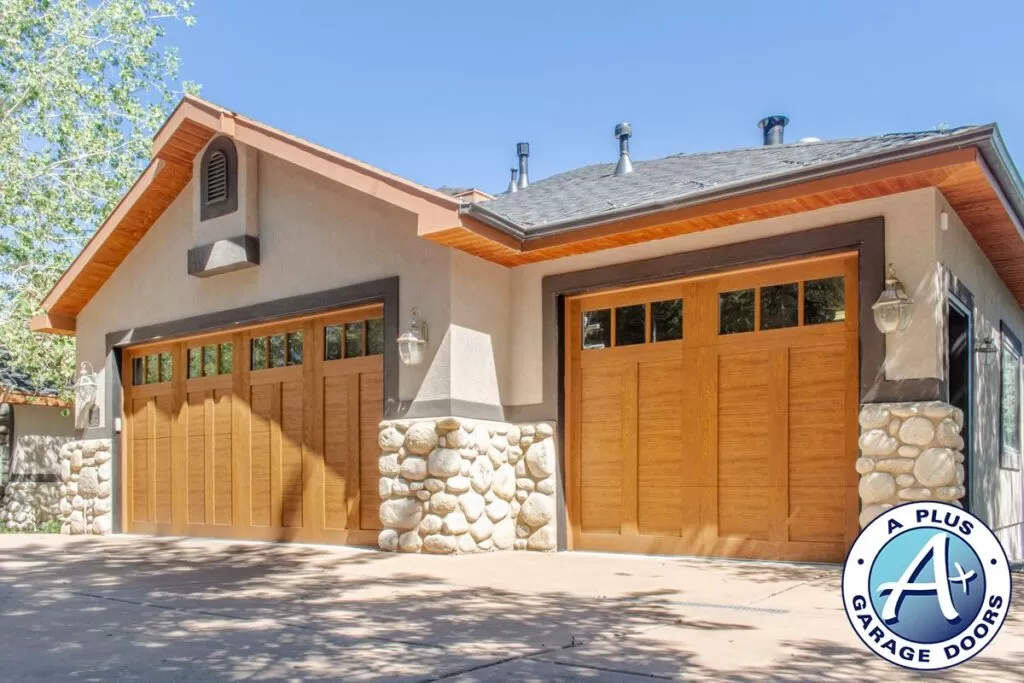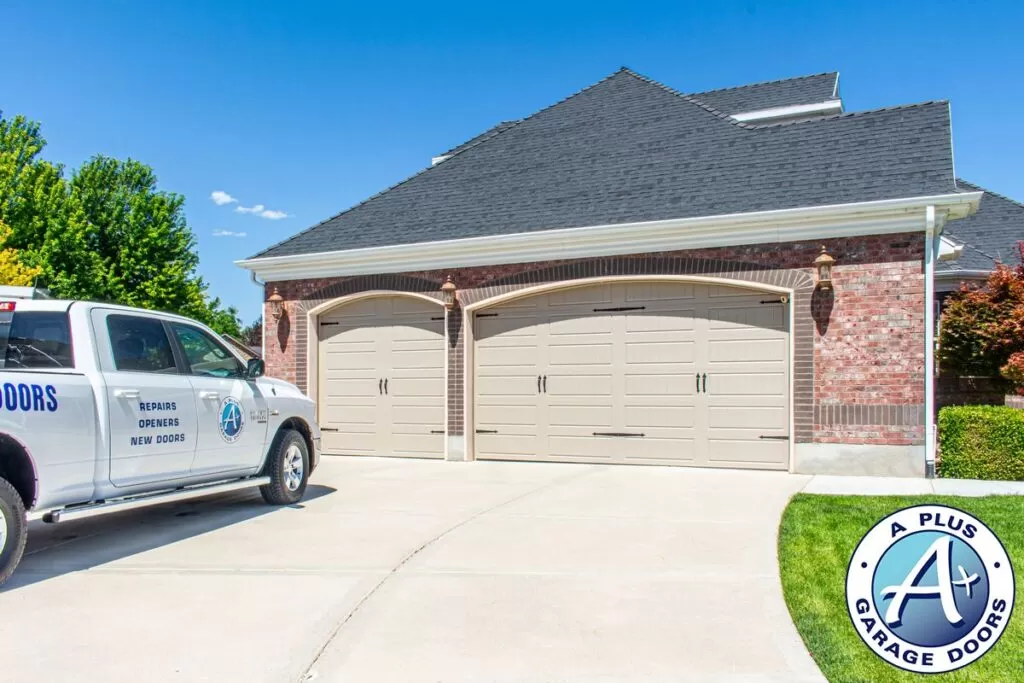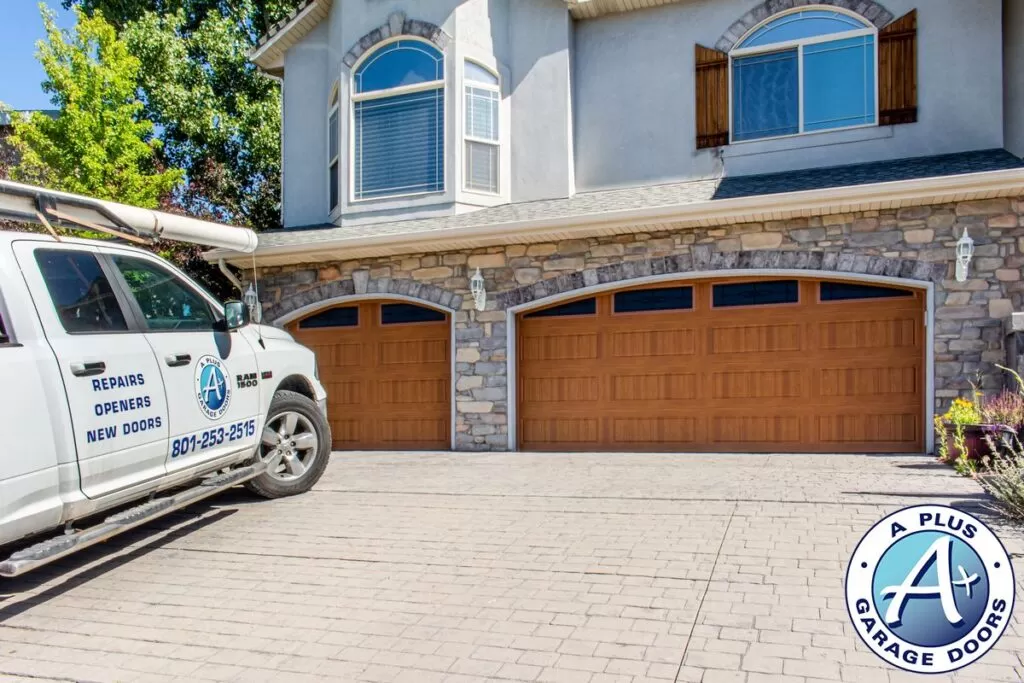When it comes to our garage doors, an often-overlooked component is good weather sealing. The weather seal acts as a barrier between the outside elements and the interior of your garage.
Benefits of Garage Door Weather Seal
The weather seal acts as a barrier between the outside elements and the interior of your garage. Its primary function is to prevent rain, wind, dust, and insects from entering into the space where you store your vehicles or valuable belongings. Made with durable materials such as rubber or vinyl, this essential component ensures that your garage remains well-insulated and protected from harsh weather conditions throughout the year.
Combating Wind and Moisture
First and foremost, weather seal serves as a barrier against external elements. It keeps out rain, snow, and dust from entering your garage space. A proper weather seal can help prevent unwanted activity inside your space due to weather.
Maintaining Temperature
Weather seal helps maintain temperature control within your garage. Whether you use this space for work or simply storing your belongings, having insulation and a good seal is crucial in ensuring optimal conditions year-round. By keeping cold air out during winter and preventing excessive heat from seeping in during summer months, you’ll have a more comfortable environment while also reducing energy costs.
Keeping Out Pests
Lastly, depending on how much of a problem pests are in your area, a proper seal can make a big difference. A well-sealed garage door eliminates potential entry points for critters seeking refuge indoors. One of our customers recently requested weather seal specifically to prevent rodents from getting in to their garage and chewing the wires on a classic car and messing with their other valuables.
Types of Garage Door Weather Seals
There are two main types of weather sealing that can make a big difference when it comes to your garage space.
Garage Door Bottom Seal
The bottom seal on your garage door is pretty self-explanatory. It’s often overlooked, but is a very important part of your system.
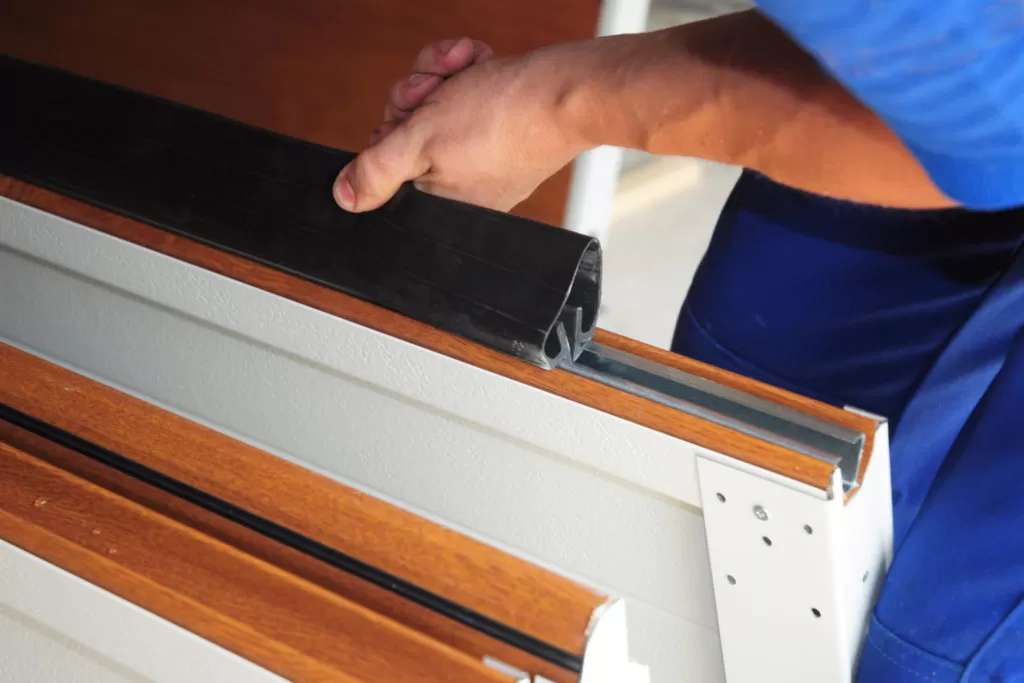
The bottom seal of a garage door performs several important functions:
Noise Reduction and Protection
One of the main functions of the bottom seal is to reduce the noise from the garage resting on concrete. Garage doors can weigh hundreds of pounds, which can make quite a racket if there is no cushion between the bottom panel and driveway.
Garage doors are often made of metal (usually steel or aluminum) and can easily damage a concrete floor even when lowered slowly. This is especially important if you have a protective coating such as epoxy, which could chip away easily if your bottom seal is compromised.
Filling Uneven Gaps
Garage doors are very straight and even. Driveways and garages settle over time, which can lead to an uneven surface for a garage door to come into contact with. In some severe cases, there can be a noticeable peak or valley where the door meets the concrete. In these cases, a bottom seal is very important and may require a special, extra-thick seal to provide additional cushioning and fill in the space.
Blocking Out Weather and Debris
In areas with a lot of rain or dry, dusty areas, a bottom seal can help prevent the elements from being pushed under the door easily. Wind can push rain, dry leaves, and other debris under an unsealed door very easily.
Keep in mind that a bottom seal will help shield your garage from unwanted weather and debris, but it won’t block everything. This is especially true in cases where a driveway is flat or slopes toward the garage door. If you have issues with standing water, snow, or other factors, a threshold seal may be a good solution. These are mounted directly to the concrete to provide a raised barrier that your bottom seal can press up against and provide a more effective water-resistant barrier.
Do you need a new bottom seal or threshold seal? We can help!
Garage Door Weather Stripping (or Weather Trim, Perimeter Seal)
Much like the bottom seal, garage door weather stripping (also known as weather trim or perimeter seal) provides a cushion between the door and framing, just on the side and top edges. After all, garage doors are long, flat panels made of a strong material, and are mounted near wood or metal framing. This makes it difficult or impossible get a garage door to rest directly against the framing in such a way that blocks out wind, daylight, dust, and other things without serious risk of the door rubbing against the frame and wearing down both the door and frame. That’s where the perimeter seal / weather trim / weather stripping can help.
Weather trim is made up of a rectangular base that is mounted to the frame and a flexible flap that the door presses up against to create a seal.
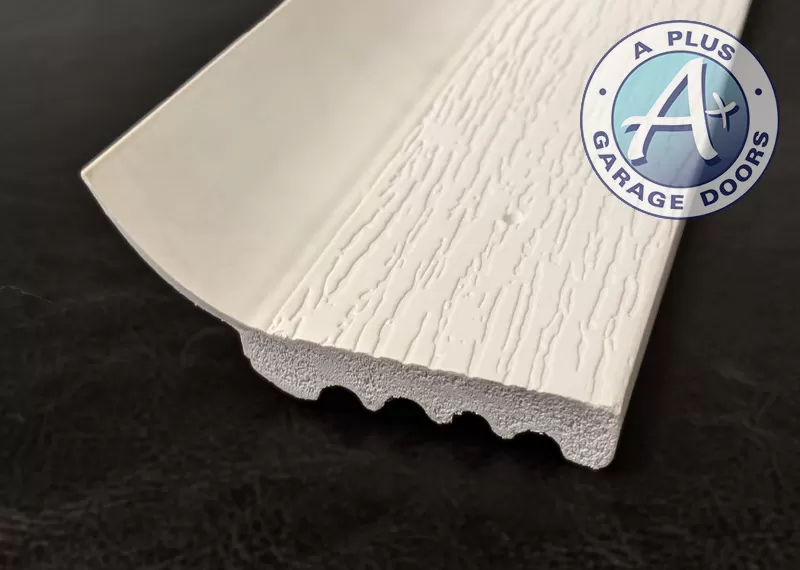
Depending on the type of installation, the weather stripping installation can be easily noticed from the outside or totally invisible. A traditional installation has the trim mounted to the outside of the frame and matched to the frame or door color. Up close, a clear border may be visible on the outside of of the garage door from a front view. Further away, it will usually blend in well. These are all photos of installation with weather stripping on the outside of the frame:
An alternative installation is using a reverse angle track with a jamb seal, which allows for installing a special weather trim on the inside of the framing that is more discrete. This method is common in commercial installations, but has also gained popularity in residential applications in recent years.
A reverse angle jamb seal sits between the inside of the frame and the door and slides directly onto a reverse angle track along the sides of the door. This has several benefits over traditional weather stripping, including a simpler installation and replacement (the seal can be pushed directly on a track instead of nailed or screwed to the frame), and a less visible seal that blends in with the door and prevents the seal from being exposed directly to sunlight and other conditions that might cause it to wear down quickly.
Garage Door Threshold Seal
When a standard bottom seal isn’t enough, a threshold seal can do even more to keep water and snow from seeping under your garage door. These are placed on a garage floor using adhesive and meet up with the bottom seal to provide a water-tight barrier that will be much more effective against standing water and snow drifts.
Do you need a quote on garage door weather sealing in Utah? Contact us today! We do both new installation as well as replacements.
